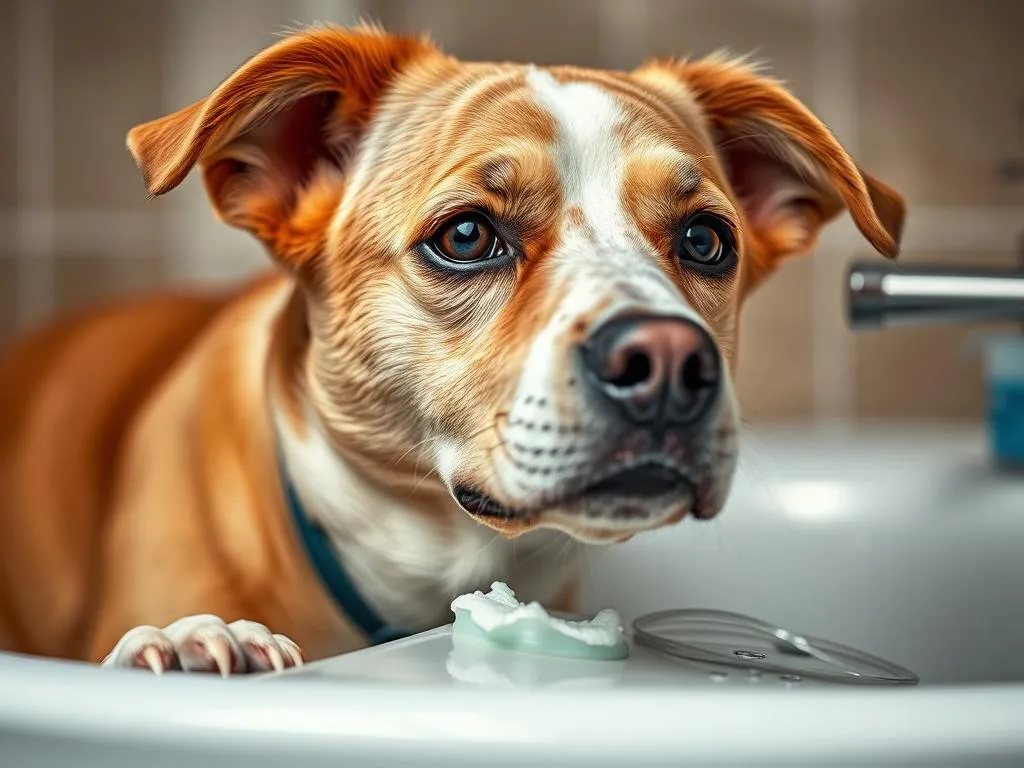
Introduction
Importance of Dog Health Care
As beloved companions, dogs are susceptible to a variety of health issues that can significantly impact their well-being. From allergies to infections, understanding the common health problems that dogs face is crucial for any responsible pet owner. One prevalent issue that can affect dogs, especially during warmer months, is ticks. These tiny parasites not only cause discomfort but can also transmit serious diseases.
Focus of the Article
This article will specifically address the problem of ticks in dogs, detailing their impact, how to check for them, and the importance of prompt removal. We will explore various methods for tick removal, including a surprisingly effective technique: how to get a tick off a dog with dish soap.
Understanding Ticks and Their Impact on Dogs
What Are Ticks?
Ticks are small arachnids that feed on the blood of mammals, birds, and sometimes reptiles and amphibians. There are several types of ticks that affect dogs, including the Lyme disease-causing black-legged tick, the American dog tick, and the brown dog tick. Each of these ticks has a distinct life cycle consisting of four stages: egg, larva, nymph, and adult.
Health Risks Associated with Ticks
Ticks are not just a nuisance; they can transmit various diseases that pose serious health risks to dogs. Some of the most common tick-borne diseases include:
- Lyme disease: Caused by bacteria transmitted through tick bites, it can lead to arthritis, kidney problems, and neurological issues.
- Ehrlichiosis: This disease can affect a dog’s white blood cells and lead to symptoms such as fever, lethargy, and bleeding disorders.
- Anaplasmosis: Also caused by a tick bite, it can cause fever, joint pain, and lethargy.
Symptoms of tick-borne illnesses can vary, but common signs to watch for include fever, lethargy, loss of appetite, and joint pain.
Signs Your Dog Has Ticks
Identifying ticks early is crucial. Look for physical signs such as:
- Itching: Excessive scratching or biting at the skin.
- Redness and swelling: Inflammation around the area where the tick is attached.
- Behavioral changes: If your dog appears lethargic or loses interest in food or play, it may indicate a tick-related issue.
How to Check Your Dog for Ticks
Best Practices for Tick Checks
Regularly checking your dog for ticks can help prevent the transmission of diseases. It’s best to check after outdoor activities, especially in areas known for tick populations. Focus on areas where ticks are likely to hide, such as:
- Behind the ears
- Between the toes
- Under the collar
- Inside the groin area
- Around the tail
Tools You May Need
To effectively check for ticks, you may want to have the following tools on hand:
- Tweezers: For removing ticks.
- Gloves: To protect your hands when handling ticks.
- Flashlight: To illuminate darker areas on your dog’s body.
How to Remove Ticks Safely
General Tick Removal Techniques
If you find a tick on your dog, it’s essential to remove it promptly and safely. Here’s a straightforward guide for effective tick removal:
- Stay calm: Your dog might be anxious. Speak to them soothingly.
- Put on gloves: Protect yourself from potential diseases.
- Use tweezers: Grasp the tick as close to the skin’s surface as possible.
- Pull upward with steady pressure: Avoid twisting or jerking, as this can break the tick and leave parts embedded in the skin.
- Clean the bite area: Disinfect with rubbing alcohol or soap and water.
- Monitor your dog: Watch for signs of infection or illness.
Using Dish Soap to Remove Ticks
An unconventional yet effective method for tick removal involves using dish soap. Here’s why and how to do it.
Explanation of the Effectiveness of Dish Soap
Dish soap works effectively because it can suffocate the tick and facilitate its removal without the need for tweezers. This method is particularly useful for those who may not have tweezers readily available.
Detailed Method on How to Get Tick Off Dog with Dish Soap
Ingredients Needed
- Liquid dish soap (any brand)
- Warm water
- Cotton ball
Step-by-Step Instructions
- Prepare the solution: Mix a few drops of dish soap with warm water in a small bowl.
- Dampen the cotton ball: Soak the cotton ball in the soapy water mixture.
- Apply to the tick: Gently press the cotton ball against the tick, ensuring it is saturated with the soap solution.
- Wait a few minutes: Allow the soap to work for about 5-10 minutes. The tick should start to loosen its grip.
- Remove the tick: Using your fingers or tweezers, gently pull the tick out, ensuring you get the entire body.
- Clean the bite area: Use soap and water or rubbing alcohol to clean the area thoroughly.
Precautions to Take
While this method can be effective, always monitor your dog afterward for signs of infection. If you notice any adverse reactions, consult your veterinarian.
Alternative Methods for Tick Removal
While using dish soap can be effective, there are other methods you might consider:
- Using tweezers: As previously described, this is the most common and recommended method.
- Commercial tick removal devices: These tools are designed specifically for tick removal and can be quite effective.
- Home remedies: Some people advocate using essential oils or vinegar, but these methods are less scientifically backed compared to dish soap or tweezers.
After the Tick Removal: Next Steps
Post-Removal Care for Your Dog
After successfully removing a tick, you should take steps to ensure your dog’s health:
- Clean the bite area: Ensure the area is disinfected to prevent infection.
- Monitor for signs of infection or illness: Watch for swelling, redness, or any unusual behavior.
When to See a Veterinarian
If you notice any of the following signs, seek veterinary attention immediately:
- Persistent lethargy
- Loss of appetite
- Fever
- Joint swelling or pain
- Difficulty breathing
Your vet may recommend follow-up care or testing for tick-borne diseases, especially if the tick was attached for an extended period.
Preventing Ticks on Your Dog
Preventive Measures
Prevention is key when it comes to ticks. Here are some effective measures you can take:
- Tick prevention products: Use collars, topical treatments, and oral medications specifically designed to repel ticks.
- Natural remedies: Essential oils like lavender or cedarwood may help deter ticks, although they should be used with caution and diluted properly.
Creating a Tick-Free Environment
In addition to protecting your dog, maintaining a tick-free environment is vital:
- Yard maintenance: Regularly mow your lawn, remove tall grasses, and clear debris where ticks can hide.
- Keeping your dog safe during outdoor activities: Avoid walking your dog in heavily infested areas, especially during peak tick season.
Conclusion
In summary, understanding how to manage tick-related issues is essential for maintaining your dog’s health. Utilizing effective methods for tick removal, such as how to get a tick off a dog with dish soap, is invaluable. Regular health checks and preventive measures will go a long way in ensuring your dog’s well-being. A proactive approach, combined with regular veterinary care, will keep your furry friend happy and healthy.









